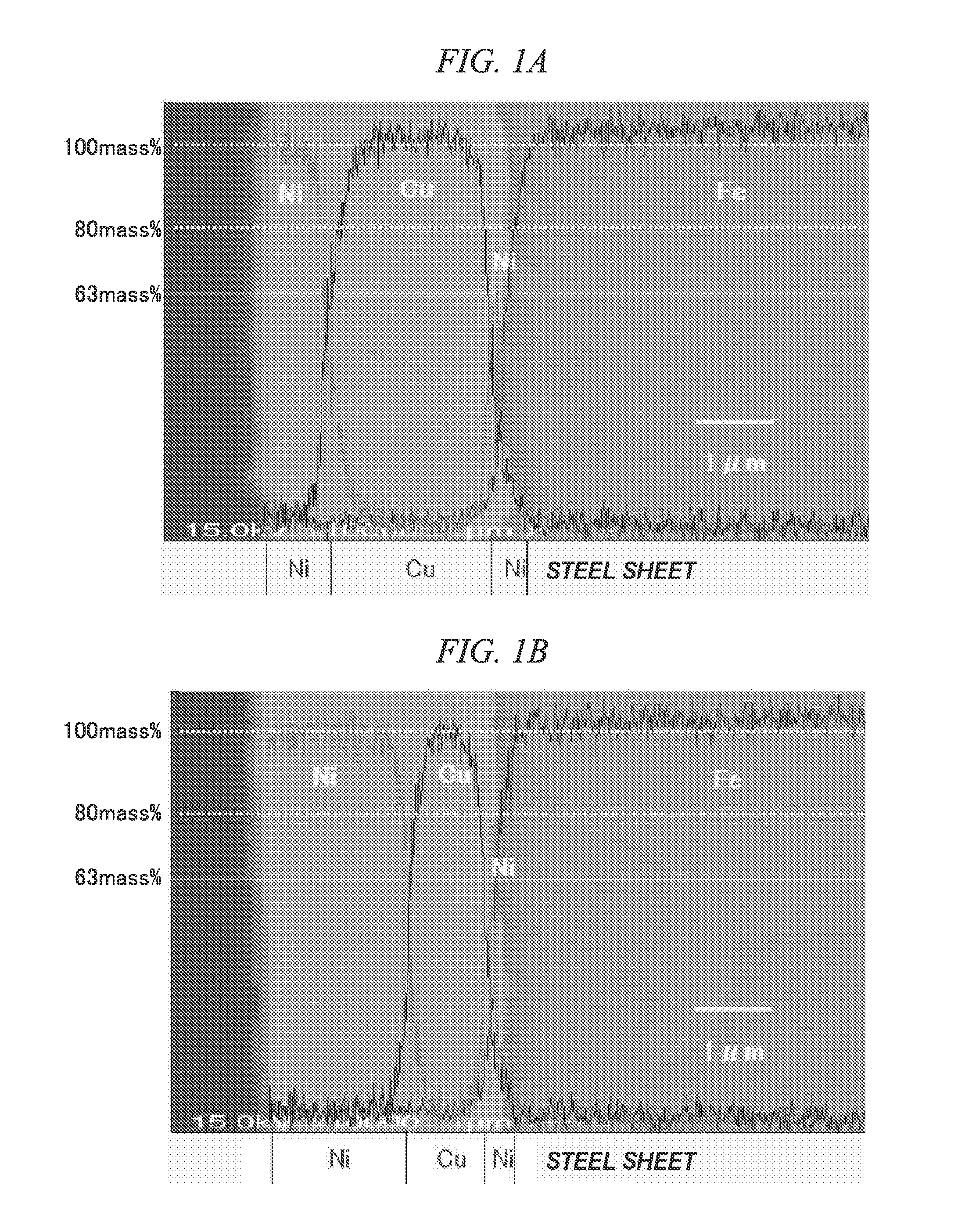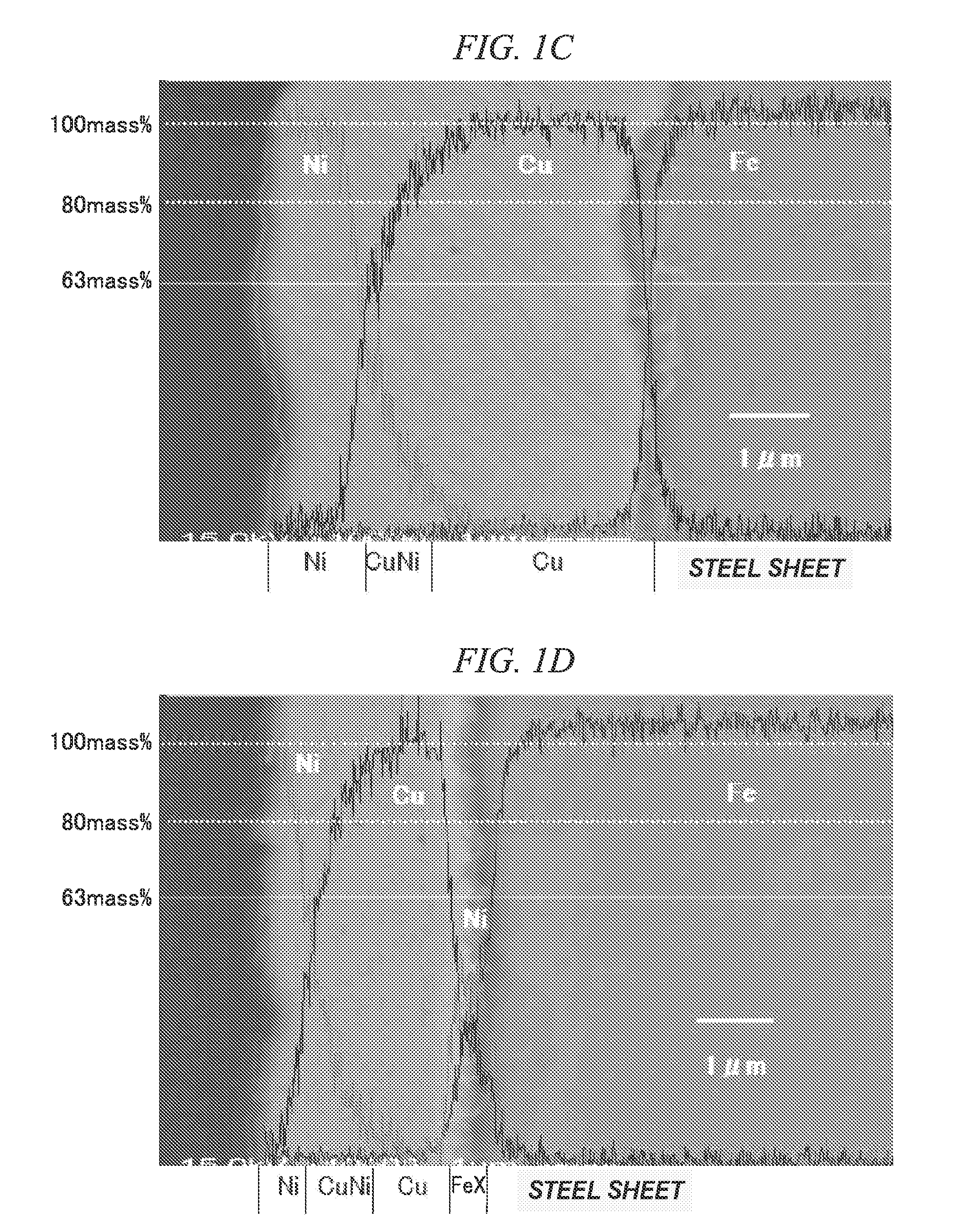Material for metal case of secondary battery using non-aqueous electrolyte, metal case, secondary battery, and producing method of material for metal case
a metal case and secondary battery technology, applied in the field of metal case materials, can solve the problems of affecting the performance of the battery, affecting the quality of the battery, so as to improve the yield of the battery, improve the quality, and reduce the cost
- Summary
- Abstract
- Description
- Claims
- Application Information
AI Technical Summary
Benefits of technology
Problems solved by technology
Method used
Image
Examples
Embodiment Construction
[0084]Hereinafter, the configuration of a secondary battery using a non-aqueous electrolyte to which the material for metal cases and the metal case according to the present invention are applied will be described. Meanwhile, in the present specification and the drawings, components having substantially the same function and configuration will be given the same reference symbol, thereby avoiding redundant descriptions. A secondary battery using a non-aqueous electrolyte to which the present invention can be applied is, for example, a lithium ion battery. The secondary battery using a non-aqueous electrolyte includes an electrode group, a non-aqueous electrolyte, and a metal case. In addition, the electrode group is composed of an anode, a cathode, and a separator present between the anode and the cathode. For example, in the case of a lithium ion battery, the anode is an aluminum (Al) foil plated with an anode active material which can charge and discharge lithium. In addition, for ...
PUM
| Property | Measurement | Unit |
|---|---|---|
| thickness | aaaaa | aaaaa |
| temperature | aaaaa | aaaaa |
| temperature | aaaaa | aaaaa |
Abstract
Description
Claims
Application Information
 Login to View More
Login to View More - R&D
- Intellectual Property
- Life Sciences
- Materials
- Tech Scout
- Unparalleled Data Quality
- Higher Quality Content
- 60% Fewer Hallucinations
Browse by: Latest US Patents, China's latest patents, Technical Efficacy Thesaurus, Application Domain, Technology Topic, Popular Technical Reports.
© 2025 PatSnap. All rights reserved.Legal|Privacy policy|Modern Slavery Act Transparency Statement|Sitemap|About US| Contact US: help@patsnap.com



